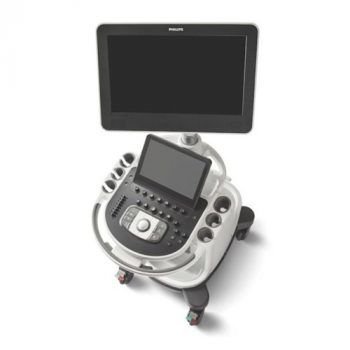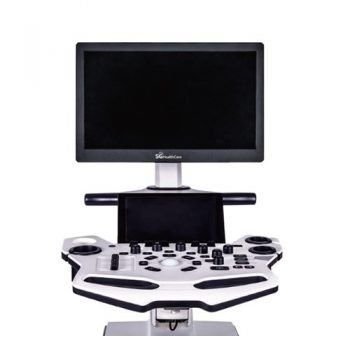Description
Philips Affiniti 30 4D Ultrasound Machine
Product Description
The Philips Affiniti 30 is a multi-purpose midrange ultrasound system sharing the same design as the other Affiniti 50 and Affiniti 70.0 series. Like other Affiniti series, Affiniti 30 has an articulated 21.5′′ high-resolution LCD display, 12.0′′ wide LCD touch screen, and 4 active transducer ports for easy viewing and folds down for transport. Affinity 50 and Affiniti 70-Smart TGC, SonoCT, XRES, TAC(Tissue Aberration Correction), iSCAN, AutoSCAN, iOPTIMIZE are the same fundamental technologies. In Affiniti 50, 10 sets of transducers can be used and some of them fit into Affiniti 70. The Philips Affiniti 30 is intended for abdominal, obstetrical, fetal echo, cerebrovascular, vascular (peripheral, cerebrovascular, temporal TCD and abdominal), abdominal vascular, gynecological and fertility, small sections, and superficial, musculoskeletal, pediatric general imaging, prostate, echocardiological and fertility, with early image and device optimization since the launch of Affiniti 50 and Affiniti 70.
Philips Affiniti 30 FAQs
- iSCAN for 2D and Doppler mode is a one-touch image optimization feature. In combination with SonoCT and XRES imaging, it is available on all imaging transducers and operations.
- Real-time compound imaging (SonoCT) helps eradicate nearly all clutter and artifacts. The number of steering angles (up to 9) is automatically selected based on the user-selected resolution/frame rate (Res/Speed) status for both curved and linear array transducers. It functions in combination with Tissue Harmonic Imaging, volume modes, XRES imaging, and duplex Doppler
- AutoSCAN optimizes the image’s brightness automatically and continuously at the default gain and TGC settings for the best image view.
- Smart optimization iOPTIMIZE: Multiple one-button approach technologies to change system output automatically and instantly for various patient sizes, flow states, and clinical requirements. It is a tissue-specific imaging feature that modifies more than 4,000 parameters during transduction.
- The device processing of second harmonic frequencies in tissue incorporating proprietary pulse inversion phase cancellation technology for high detail resolution during harmonic imaging is Tissue Harmonic Imaging with pulse inversion technology.
- Intelligent Doppler imaging automatically preserves optimum angle-to-flow to help provide accurate measurements of Doppler velocity (available with vascular and general imaging application packages on linear transducers only)
- Adaptive Doppler improves weak signals to improve visibility of the spectrum and pulsed-wave audio signals to improve flow evaluation.
- SmartExam Protocols: is a completely flexible protocol capability with the versatility to execute the examination protocol in any series for any clinical application enabled on the device. Based on industry and accreditation standards, it supports preset procedures for transthoracic and transesophageal cardiac and vascular examinations.
- QLAB IMT: This QLAB instrument enables quick and accurate measurement of intimate media thickness in carotid and superficial vessels.
- QLAB 3DQ GI: This QLAB tool on the Philips device enables 3D image data set viewing, quantification, cropping, rotation, and calculation.
- Strain Quantification (SQ) is for regional myocardial function assessment. Assessing synchronicity and guidance during procedures for biventricular pacing. Tissue Doppler imaging to calculate the myocardial velocity and derive the displacement-strain rate and strain along user-defined M-lines (TDI)















There are no reviews yet.